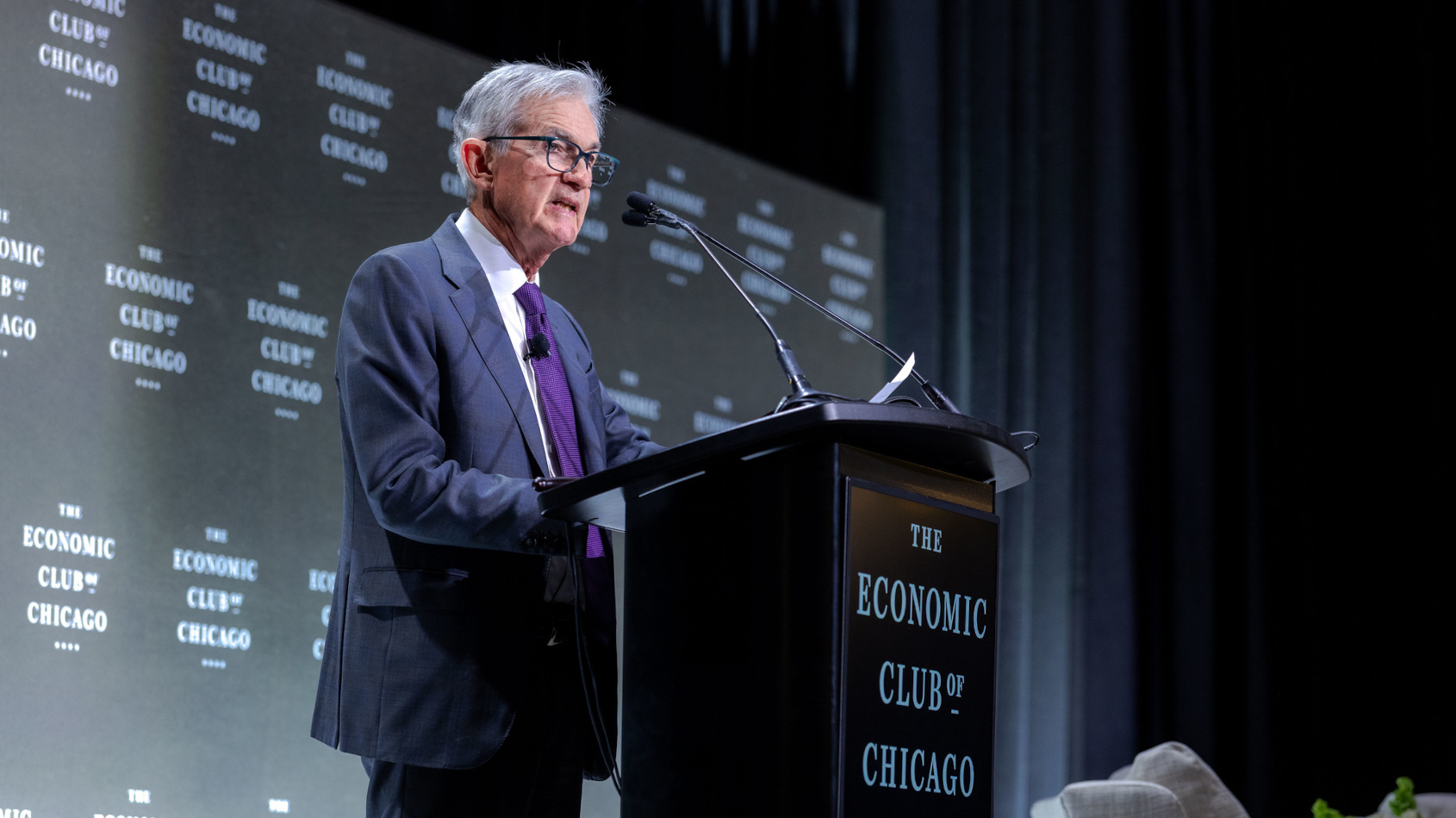Consumer sentiment continues to sag as even prime auto ABS experiences turbulence

Federal Reserve chair Jerome Powell is pictured during his appearance at the Economic Club of Chicago on April 16. Image courtesy of the Fed.
Federal Reserve chair Jerome Powell quipped during an appearance at the Economic Club of Chicago earlier this month, saying, “As that great Chicagoan Ferris Bueller once noted, ‘Life moves pretty fast.’”
Nowadays, many consumers don’t appear to be liking how life is going, with Cox Automotive chief economist Jonathan Smoke acknowledging on Monday that consumers’ views of buying conditions for vehicles declined to the lowest level since September 2022 as views of prices have deteriorated.
In his analysis, Smoke pointed out that the final reading of consumer sentiment from the University of Michigan declined 8.4% in April to 52.2, which marked the fourth consecutive month of sagging sentiment.
Survey director Joanne Hsu elaborated about the findings in her analysis.
“While the April decline in current conditions was modest, the expectations index plummeted with drop-offs in personal finances as well as business conditions,” Hsu said. “Expectations have fallen a precipitous 32% since January, the steepest three-month percentage decline seen since the 1990 recession.
“While this month’s deterioration was particularly strong for middle-income families, expectations worsened for vast swaths of the population across age, education, income, and political affiliation,” she continued. “Consumers perceived risks to multiple aspects of the economy, in large part due to ongoing uncertainty around trade policy and the potential for a resurgence of inflation looming ahead. Labor market expectations remained bleak.
“Even more concerning for the path of the economy, consumers anticipated weaker income growth for themselves in the year ahead. Without reliably strong incomes, spending is unlikely to remain strong amid the numerous warnings signs perceived by consumers,” Hsu went on to say.
And before you might think that sour consumer sentiment might be fueled only by the subprime credit space, consider this update from S&P Global Ratings.
According to a news release shared last week, S&P Global Ratings said the prime auto loan ABS segment is experiencing deteriorating performance on more recent vintages, specifically the 2023 vintage and first-half 2024 vintages.
“While most issuers are experiencing a normalization in performance back to pre-pandemic loss levels, some finance companies are reporting significantly more deterioration,” analysts said.
“To determine what might be driving the higher losses, we examined four of these companies by drilling down into the loan-level data they report in their monthly ABS-EE reports filed with the SEC,” they continued. “We believe one of the contributing factors is higher PTI ratios, which speaks to the reduced affordability of vehicle ownership given rising vehicle prices and higher annual percentage rates (APRs).”
Looking out beyond automotive, Comerica Bank chief economist Bill Adams and senior economist Waran Bhahirethan recapped another vital source of information that Powell and his fellow policymakers examine when making decisions.
“The Beige Book, a summary of anecdotal information collected by the Federal Reserve from various contacts across the nation, reported the economy nearly stalled in recent weeks,” Adams and Bhahirethan said in another analysis released on Monday. “Tariff policy uncertainty weighed on the outlook in many parts of the country. While vehicle sales rose solidly, non-auto purchases were weaker. Employment was essentially unchanged, with businesses taking a wait-and-see approach to staffing decisions. Most businesses saw their input costs climb in recent weeks and expect to pass on higher costs to customers.”
Can the Fed alone turn things to the positive? Let’s go back to Powell’s appearance in the Windy City on the day after Tax Day.
“For the time being, we are well positioned to wait for greater clarity before considering any adjustments to our policy stance,” Powell said. “We continue to analyze the incoming data, the evolving outlook, and the balance of risks. We understand that elevated levels of unemployment or inflation can be damaging and painful for communities, families, and businesses. We will continue to do everything we can to achieve our maximum-employment and price-stability goals.”


